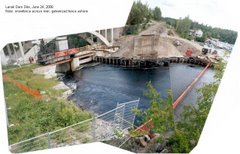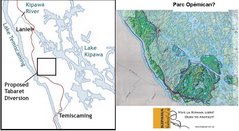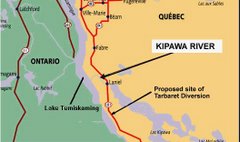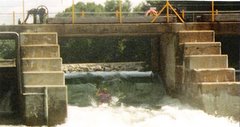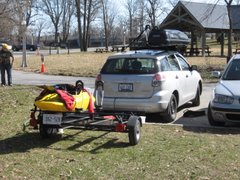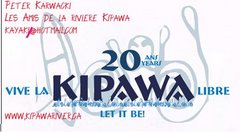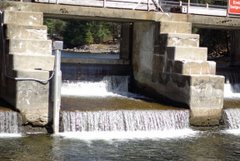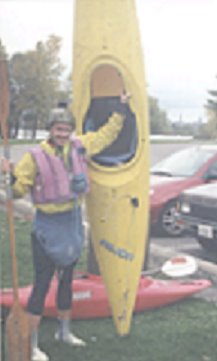
A question for Stephane Dion,the Liberal Party and any other political wannabees
Answers will be posted on the "I Speak for Canadian Rivers Site" www.canadianrivers.com and forwarded to the more than 100 various outdoor user groups now aware of this and making statements on their web sites.
...My question deals with the proposed changes to the Navigable Waters Protection Act.
The majority of modern Canadians are completely unaware of the great gifts that this piece of legislation has given us. This legislation is almost as old as the country and was put in place with great foresight by the early Canadian governments, a country which was built on the ability of an open canoe to navigate the vast water resources that we so sadly continue to exploit.
This act, enshrined in law, drafted to give all Canadians access to that resource and to protect that water for future generations the ability to canoe, kayak, power boat, to fish and to hunt, much the same as Canadians 100 years ago, except instead of doing it to survive we do it for recreation.
In the recent past Canadians have learned to use the act for protection of their water ways because the act required that "works" be advertised, giving a chance for concerned citizens to voice their concerns over proposed works. If Canadians even 40 years ago showed the same concern for their environment we would not be using huge amounts of tax dollars to rehabilitate the many cement ditches and destroyed urban watersheds.
At the 11th hour, various out door groups became aware of the proposed changes to the act by the TRAN committee, Chaired by Conservative member of Parliament Merv Tweed of the riding Brandon-Souris and what we found very unsettling was the fact that the stakeholders that were made aware of these meetings were very one-sided (no outdoor user groups were properly invited or made aware of the hearings).
As a Canadian in what is supposed to be a democratic country I found this treatment and their responses towards the outdoor user groups completely unacceptable and frightening.
We can understand the need for changes,
We can also understand the need for a fast track mechanism to build infrastructure projects.
But we also understand that these works need to be done in an environmentally way as to safeguard the health of the watersheds.
There should be approved construction/water treatment processes that evolve with technological advancements.
We also believe that the Canadian public should not have to subsidize industry so that they may profit. A case in point is the 16 lakes/watersheds that have been requested to be made into tailing ponds.
These are just more “Sydney tar ponds” disasters in the making, If the costs of protecting the environment makes the business of mineral or resource extraction unprofitable then the taxpayer shouldn’t make up the difference.
How can we protect/preserve National Parks such as Nahanni, let alone the few areas of old growth forests and urban water sheds that are left with the “Gutting” of our environmental laws that has taken place over the last couple of years?
There is definitely a pattern here where industries cry poor and can not create employment or compete with other international companies, they then lobby, change the laws so that their profit margins increase, and then leave environmental disaster areas, and then claim they do not need to pay for the clean up because it was done under existing laws.
The proposed changes to the Navigable water act are a perfect example of this, and by also denying/removing our heritage rights to access these areas, alarm bells can not be sounded to the desecration of these water sheds.
What is your position on the changes to the Navigable waters Protection Act?
Are you going to ensure that the present right to navigate “small waters” be enshrined in new legislation?
Are you going to restore the right of Canadians to be properly notified and be involved in shaping Canada’s future in this and other committee hearings?
Jeff McColl


